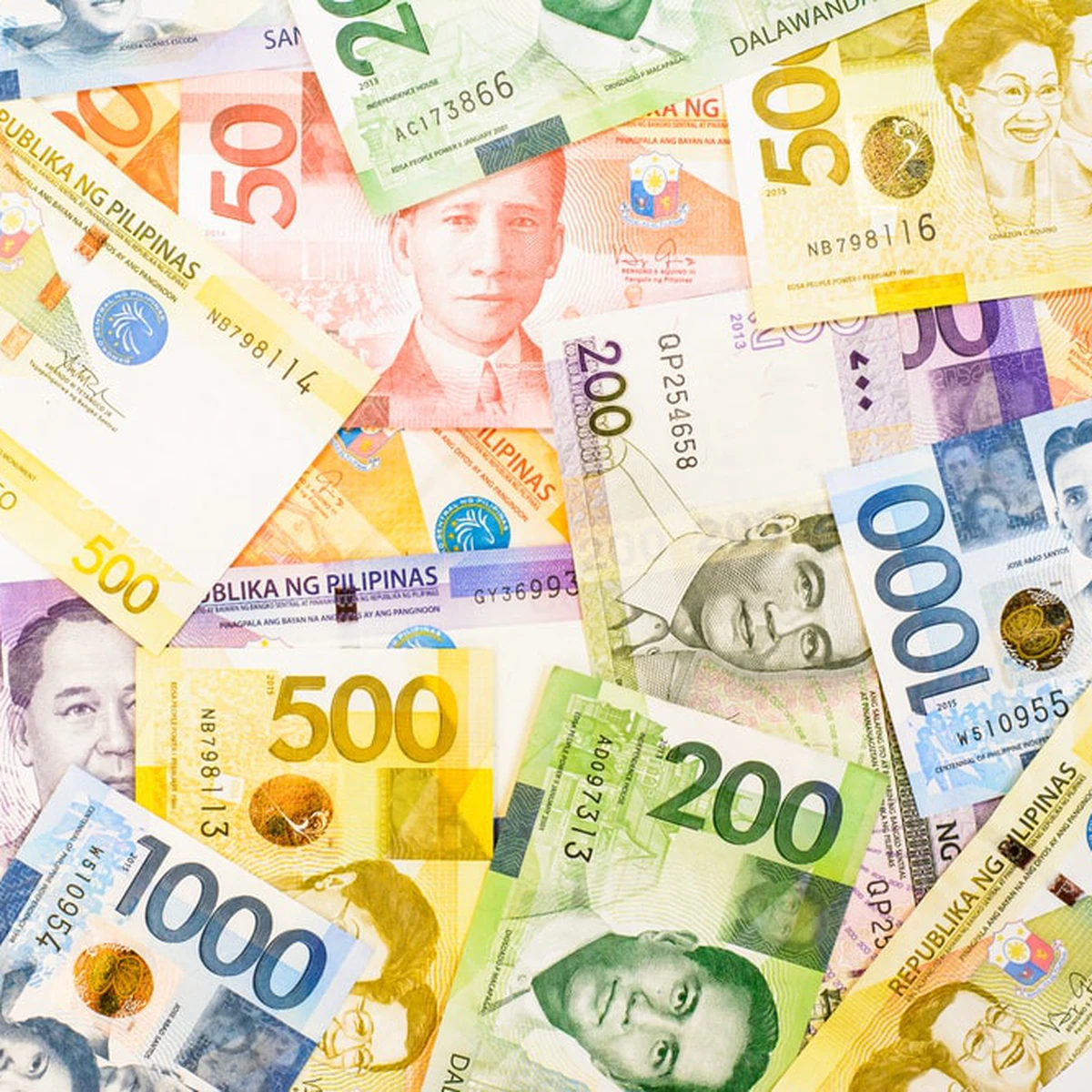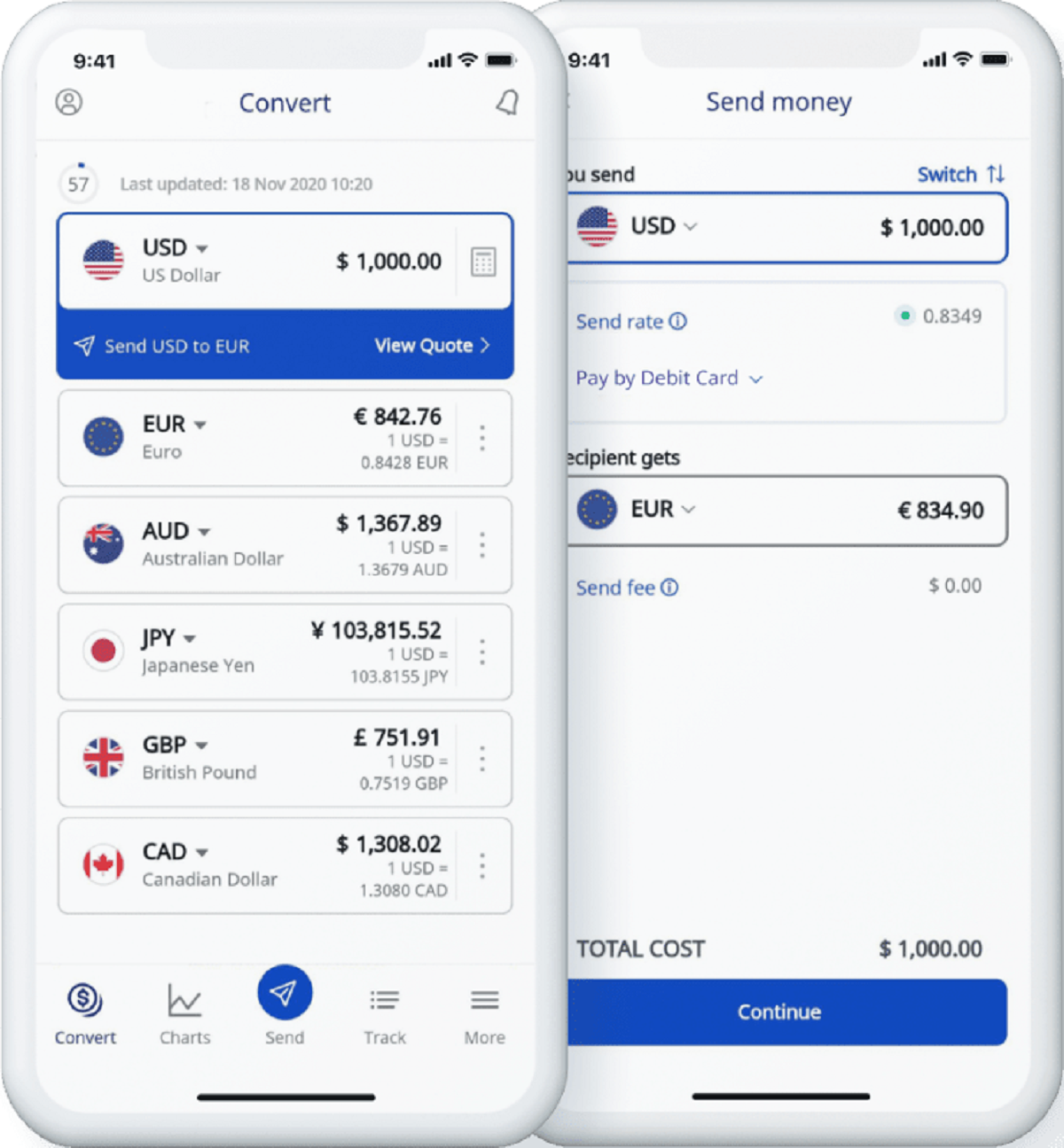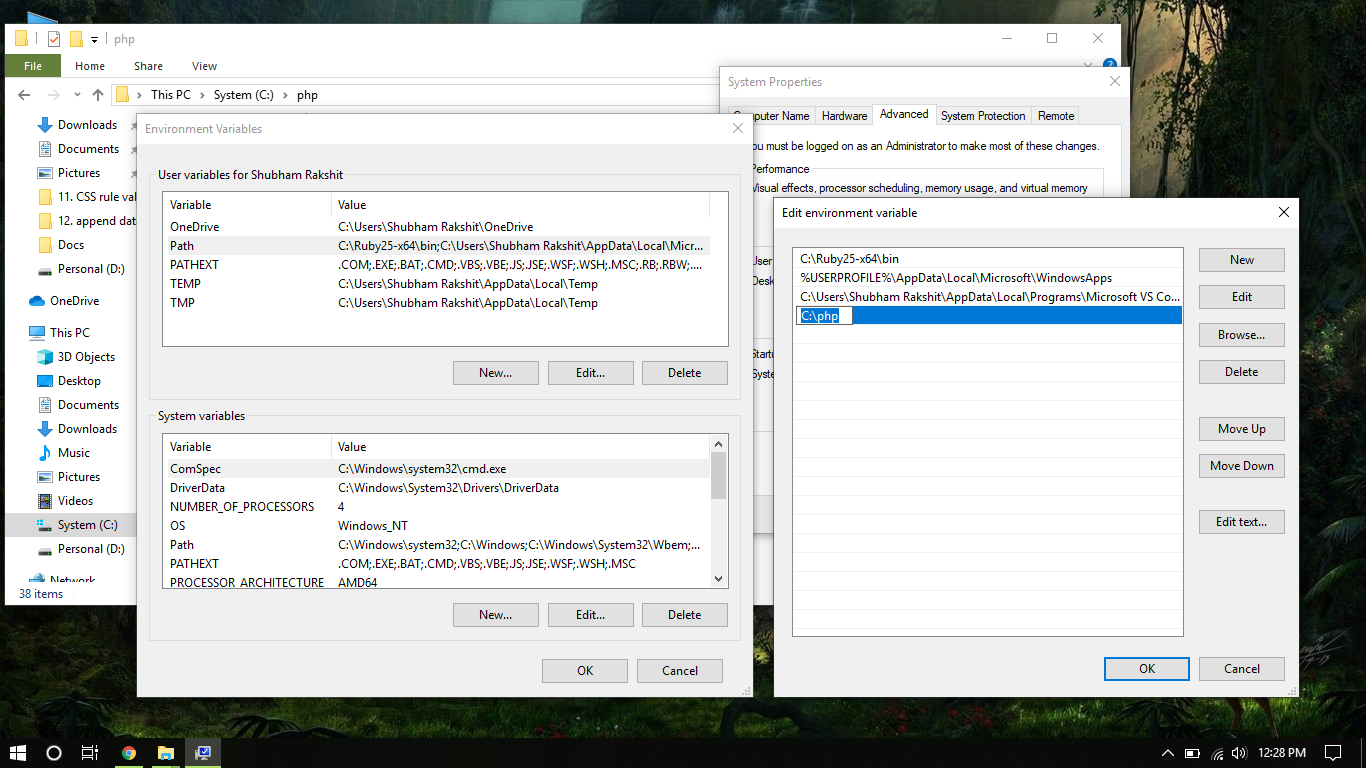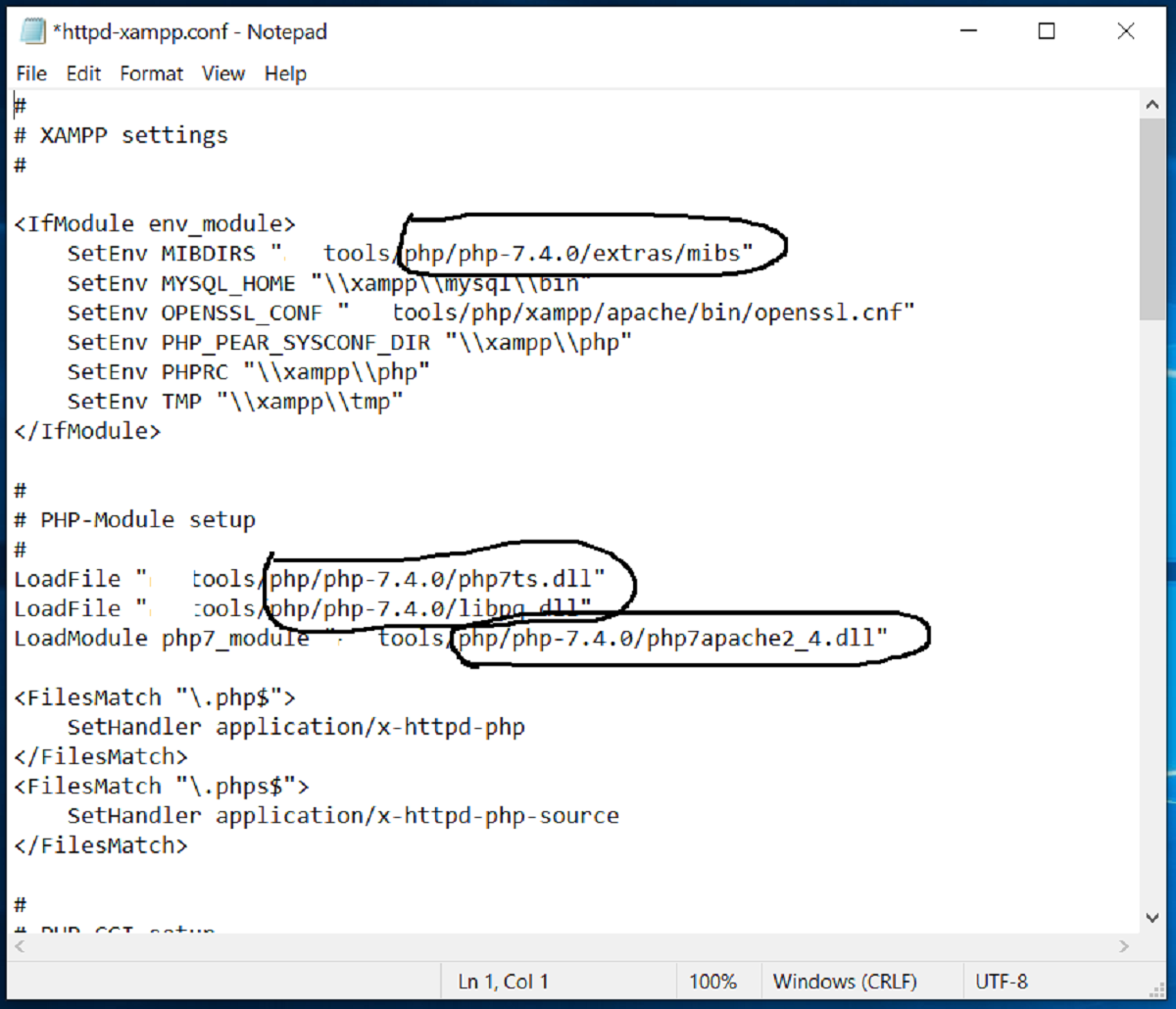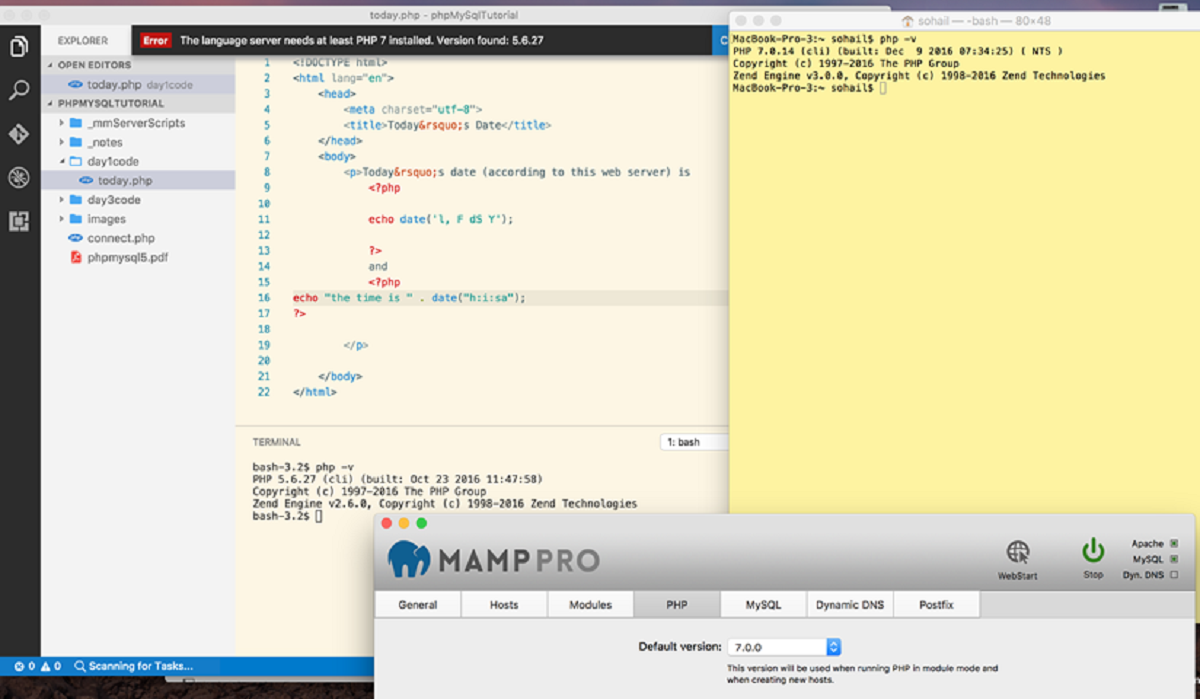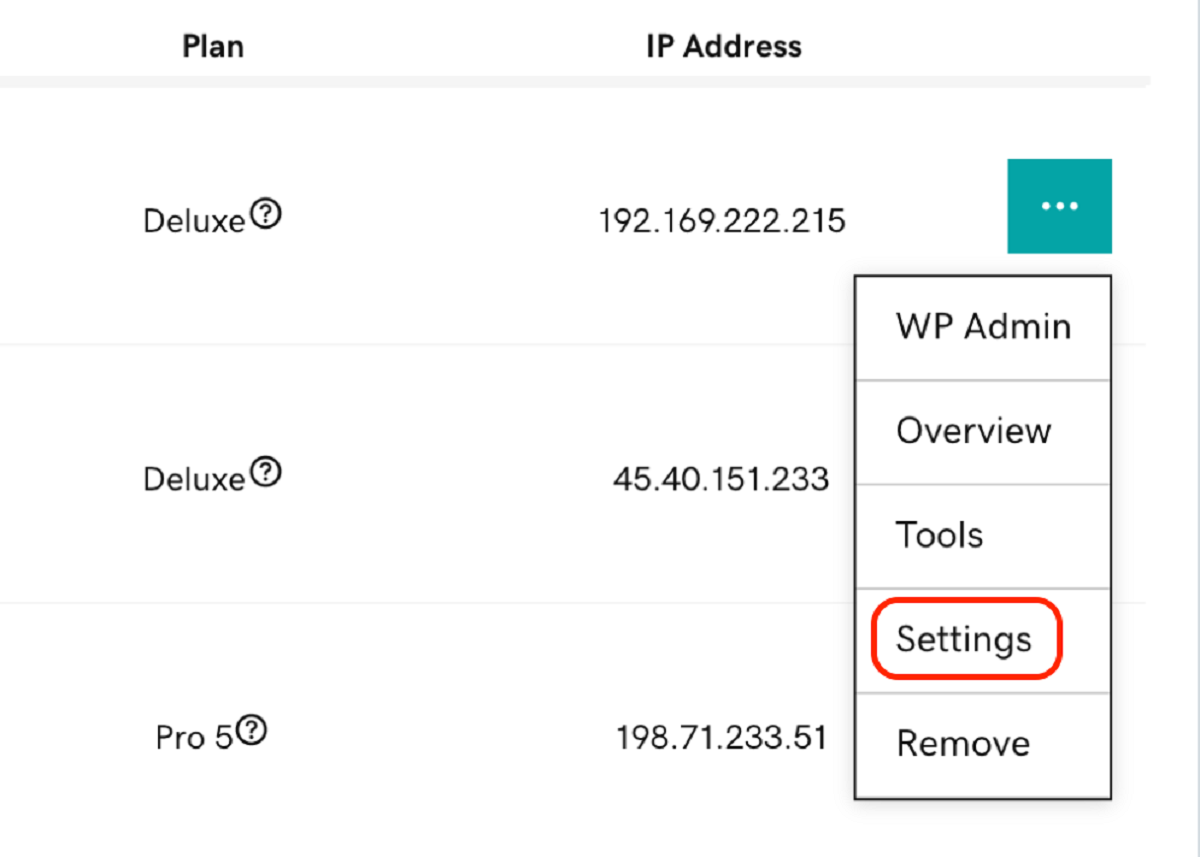Introduction
Welcome to our comprehensive guide on the fascinating world of money in the Philippines! Money is a concept deeply ingrained in our everyday lives, and yet many of us may not fully understand its origins, evolution, and significance. In this article, we will take a closer look at the concept of money, its functions, and its role in the history of the Philippines.
Money, in its simplest form, is a medium of exchange that facilitates the buying and selling of goods and services. It serves as a common unit of value, allowing individuals to assign worth to goods and services and facilitate trade. Since ancient times, money has taken various forms, evolved alongside civilizations, and adapted to the changing needs of societies.
The primary functions of money include acting as a medium of exchange, a unit of account, a store of value, and a standard of deferred payment. These functions, combined with the trust and acceptance of the population, determine the effectiveness and stability of a currency.
In the history of the Philippines, money has played a crucial role in shaping the economy and the nation as a whole. From the time of ancient Filipino civilizations to the Spanish colonial era and the modern age, the concept of money has consistently evolved and adapted to the changing landscape.
Today, the official currency of the Philippines is the Philippine Peso, denoted by the currency code “PHP.” It is issued and regulated by the Bangko Sentral ng Pilipinas (BSP), the country’s central bank. The Philippine Peso is widely recognized and accepted as legal tender in the country, and it plays a pivotal role in daily transactions, trade, and economic activities.
The PHP is widely used in various forms, including banknotes and coins of different denominations. The Philippine currency boasts several security features to protect against counterfeiting, ensuring the integrity of the monetary system.
In this guide, we will delve into the history of money in the Philippines, explore the design and security features of the PHP, and provide insights into the various denominations and coins in circulation. We will also touch upon any demonetized currencies that have been phased out over time.
So join us on this journey as we unravel the mysteries and intricacies of money in the Philippines. Discover the fascinating world of currency and gain a deeper understanding of the role it plays in our daily lives and the economy as a whole.
What is Money?
Money is an essential part of our everyday lives, but do we really understand what it truly represents? At its core, money is a medium of exchange that enables the buying and selling of goods and services. It acts as a common unit of value, allowing individuals to assign worth to different products and facilitate trade.
Money has played a crucial role in the development of civilizations throughout history. It provides a way to measure and compare the value of goods and services, making it easier to conduct transactions and allocate resources efficiently. Without money, we would be forced to rely on a system of bartering, where goods are traded directly for other goods, which can be impractical and inefficient.
Throughout the ages, money has taken various physical forms, including shells, precious metals such as gold and silver, and paper currencies. Today, money exists in digital forms as well, with the rise of online transactions and electronic banking.
Money serves several essential functions in an economy:
- Medium of Exchange: Money facilitates the exchange of goods and services by providing a universally accepted medium for transactions. Instead of having to rely on the cumbersome process of bartering, people can use money to acquire the things they need.
- Unit of Account: Money provides a standard unit of measurement for the value of goods and services. It allows for easy comparison and calculation of prices, making economic decision-making more efficient.
- Store of Value: Money serves as a means to store wealth and preserve purchasing power over time. By saving money, individuals can accumulate resources and access them when needed in the future.
- Standard of Deferred Payment: Money allows for the settlement of debts and obligations over time. It provides a reliable and widely accepted means of repaying loans or fulfilling financial commitments.
To function effectively as money, a currency must have a set of key characteristics:
- Durability: Money should be able to withstand daily wear and tear without losing its value.
- Portability: Money should be easy to carry and transport, facilitating transactions.
- Divisibility: Money should be divisible into smaller units to accommodate various transaction sizes.
- Uniformity: Each unit of money should be of the same value and quality as others.
- Acceptability: Money should be widely accepted as a means of payment.
Understanding the nature and functions of money is key to comprehending how it influences our daily lives, shapes economies, and impacts societies. With this foundation, we can further explore the intriguing history and significance of money in the Philippines.
Evolution of Money
The concept of money has evolved over time, adapting to the needs and demands of different societies. From ancient forms of bartering to modern electronic currencies, the evolution of money reflects the progress of human civilization and the advancements in technology and economic systems.
The earliest known system of trade involved direct bartering or the exchange of goods and services without the use of money. For example, a farmer might exchange his crops for a carpenter’s tools. However, bartering had significant limitations. It required a double coincidence of wants, meaning that both parties had to want what the other had to offer at the same time.
To overcome these limitations, societies began using various forms of commodities as mediums of exchange. These commodities had intrinsic value, enabling individuals to trade for other goods. Common examples of commodities used as money include shells, beads, salt, and even livestock.
As societies grew more complex, the use of precious metals as money became widespread. Gold and silver emerged as the favored metals due to their rarity, durability, and pleasing aesthetic qualities. Coins made from these precious metals were minted and became widely accepted as official modes of payment.
With the advent of paper money, the concept of representative money emerged. Early forms of paper money were backed by reserves of gold or silver held by the issuing authority, such as a central bank or government. This allowed for greater flexibility in conducting transactions, as physical metal coins became less necessary.
In the modern era, money has taken on digital forms with the rise of electronic banking and online transactions. Digital currencies, such as cryptocurrencies, have gained popularity and are transforming the way we think about money. These currencies rely on advanced cryptographic technologies to provide secure and decentralized transactions.
The evolution of money reflects the progress of civilizations and their economic systems. It has gone from simple bartering systems to the use of precious metals, and now to digital forms that transcend physical boundaries. Today, we are witnessing an era where the boundaries of money are constantly being pushed and redefined by technology and innovation.
As we explore the concept of money in the Philippines, we will delve deeper into the historical context and see how the evolution of money has shaped the economic landscape of the nation.
Functions of Money
Money serves several fundamental functions in an economy, playing a vital role in facilitating economic activities and allowing for the efficient exchange of goods and services. These functions form the backbone of any monetary system and help ensure the smooth functioning of an economy.
Let’s take a closer look at the key functions of money:
- Medium of Exchange: One of the primary functions of money is to act as a medium of exchange. It serves as a universally accepted and trusted form of payment that allows individuals to acquire the goods and services they need. With money, people no longer have to rely on the direct exchange of goods through bartering, making transactions faster, more convenient, and more efficient.
- Unit of Account: Money provides a standard unit of measurement for the value of goods and services. By assigning a numerical value to products, money allows for easy comparison and calculation of prices. This makes economic decision-making more straightforward for both individuals and businesses. Without a common unit of account, it would be challenging to assess the relative value of different goods and determine fair prices.
- Store of Value: Money serves as a means of storing wealth and preserving purchasing power over time. People can save their money and use it to acquire goods and services at a later date. This function is particularly important in an economy where inflation exists, as it allows individuals to protect their wealth from losing value over time. Money provides a way to accumulate assets and build personal wealth.
- Standard of Deferred Payment: Money is also a standard of deferred payment, meaning it enables the settlement of debts and obligations over time. Loans, credit transactions, and other financial agreements often involve repayments made in the future. Money provides a reliable and widely accepted medium for fulfilling these obligations and facilitates the flow of credit in the economy.
These functions of money are essential in maintaining economic stability, promoting trade, and facilitating economic growth. By acting as a medium of exchange, unit of account, store of value, and standard of deferred payment, money plays a crucial role in enabling individuals and businesses to carry out economic transactions and allocate resources efficiently.
In the context of the Philippines, understanding these functions of money will help us appreciate the role that the Philippine Peso plays in the country’s economy. As we delve deeper into the history, design, and usage of the Philippine Peso, we will gain a better understanding of how it fulfills these functions and impacts the lives of Filipinos on a daily basis.
History of Money in the Philippines
The history of money in the Philippines dates back to ancient times, with various forms of currency being used by indigenous Filipino tribes. These early forms of money were typically based on commodities and had intrinsic value, such as gold, silver, beads, and even seashells.
During the pre-colonial period, the use of gold as currency was prevalent among Filipino societies. Gold ornaments and jewelry served as both a symbol of wealth and a medium of exchange. The concept of the “Piloncitos” emerged, which were small gold beads used as currency by the early Filipinos.
With the arrival of Spanish colonizers in the 16th century, the use of precious metals as currency continued, but Spanish coins and the first paper currency in the Philippines, known as “Boletas,” were introduced. The Spanish coins, known as “pesos,” were widely used for trade and commerce.
During the American colonial period in the early 20th century, the United States introduced the Philippine Peso as the official currency. The peso underwent several changes in value and denominations over the years, reflecting the economic and political developments in the country.
Following World War II, the Philippines regained its independence, leading to the establishment of the Central Bank of the Philippines in 1949. The Central Bank took over the responsibility of issuing and regulating the Philippine Peso, ensuring the stability and integrity of the currency.
Since then, the Philippine Peso has remained as the official currency of the Philippines. It has undergone several design changes and updates to enhance its security features and reflect the rich cultural heritage and history of the country.
Throughout the history of money in the Philippines, several demonetized currencies have also played a role. These currencies, such as the Ang Bagong Lipunan Series and the New Design Series, have been phased out and replaced with newer versions to ensure the stability of the currency.
Today, the Philippine Peso remains an essential part of the Philippine economy and is widely accepted as legal tender. It serves as a medium of exchange, unit of account, and a store of value for Filipinos. The ongoing advancements in technology and the rise of digital currencies present new opportunities and challenges for the future of money in the Philippines.
Understanding the history of money in the Philippines allows us to appreciate the significance of the Philippine Peso and its role in shaping the economic landscape of the country. As we dive deeper into the intricacies of the Philippine Peso, we will explore its design, security features, and the different denominations in circulation.
What is PHP?
In the Philippines, PHP stands for the Philippine Peso, which is the country’s official currency. The Philippine Peso is denoted by the currency code “PHP” and is regulated and issued by the Bangko Sentral ng Pilipinas (BSP), the central bank of the Philippines.
The PHP is widely recognized and accepted as legal tender in the country and plays a crucial role in daily transactions, trade, and the overall economy. It serves as a medium of exchange, allowing individuals and businesses to buy and sell goods and services.
The Philippine Peso is subdivided into smaller units called “centavos.” One Peso is equivalent to 100 centavos. Coins are available in denominations of 1, 5, and 10 pesos, while banknotes are issued in denominations of 20, 50, 100, 200, 500, and 1,000 pesos.
The PHP has undergone various design changes over time to enhance its security features and reflect the rich culture and history of the Philippines. The current banknote series showcases prominent Filipino national heroes, iconic landmarks, and indigenous flora and fauna in intricate and vibrant designs.
Security features are incorporated into PHP banknotes to protect against counterfeiting. These features include watermarks, security threads, invisible ink, and intricate patterns that are difficult to replicate. These security measures help ensure the integrity of the currency and maintain public trust.
Additionally, PHP coins come in different sizes, shapes, and metallic compositions. They feature national symbols, historical figures, and endemic flora and fauna of the Philippines. The coins are also equipped with security elements to deter counterfeiters.
While the Philippine Peso remains primarily a physical currency, digital payment methods and electronic transfers are gaining popularity in the country. These advancements in technology are changing the way transactions are conducted and bringing greater convenience and accessibility to financial services.
As a national currency, the PHP plays a crucial role in maintaining price stability, supporting economic growth, and facilitating trade within the Philippines. The value of the PHP against other international currencies is subject to fluctuations in the foreign exchange market.
Understanding what PHP represents and its significance in the Philippine economy can help individuals and businesses navigate financial transactions effectively and contribute to the overall development of the country.
PHP as Legal Tender
The Philippine Peso (PHP) is recognized as the official currency of the Philippines and is designated as legal tender. This means that the PHP is accepted as a valid form of payment for goods, services, and debts within the country.
As legal tender, the PHP holds the status and backing of the Philippine government, ensuring its acceptance and validity in both private and public transactions. Businesses, individuals, and government entities are obligated to accept PHP as payment for goods and services, with a few exceptions, as specified by relevant laws and regulations.
The legal tender status of the PHP provides a sense of stability and uniformity in economic transactions throughout the country. It ensures that there is a common medium of exchange that is universally accepted, promoting economic efficiency and facilitating trade.
Furthermore, the legal tender status of the PHP reflects the confidence and trust that individuals and businesses place in the Philippine monetary system. The stability and acceptance of the currency contribute to maintaining stable prices and financial integrity within the economy.
However, it’s important to note that legal tender laws do not mandate acceptance of the PHP for all transactions. There may be certain circumstances where businesses or individuals have the right to refuse cash payments or require alternative forms of payment, such as electronic transfers or credit cards. Additionally, there may be limitations on the acceptance of large denominations in certain transactions to prevent money laundering or other illicit activities.
The Bangko Sentral ng Pilipinas (BSP), as the central bank of the Philippines, is responsible for maintaining the stability and integrity of the PHP as legal tender. The BSP ensures that an adequate supply of PHP banknotes and coins is available in the economy to meet the needs of daily transactions.
Being aware of the legal tender status of the PHP is crucial for individuals and businesses operating in the Philippines. It ensures compliance with financial obligations and promotes a transparent and efficient financial system that benefits all participants in the economy.
As we explore further into the features and characteristics of the Philippine Peso, we will gain a deeper understanding of its role as legal tender and its significance in the everyday lives of Filipinos.
Security Features of PHP
The Philippine Peso (PHP) incorporates several security features to protect against counterfeiting and ensure the integrity of the currency. These features are designed to make it difficult for counterfeiters to reproduce genuine PHP banknotes, safeguarding the trust and confidence in the currency.
One of the prominent security features found on PHP banknotes is the watermark. A watermark is a faint image or design that is embedded into the banknote paper during the manufacturing process. When held up to the light, the watermark becomes visible, adding an extra layer of authenticity to the currency.
Another security feature is the security thread, a thin strip embedded within the banknote. The security thread is usually made of a unique material and is placed at a specific location on the banknote. It can contain various elements such as microprinting, holographic images, and even fluorescent properties, making it difficult to counterfeit.
Invisible ink is another security measure incorporated into PHP banknotes. Certain areas of the banknotes may contain hidden ink that can only be seen under specific lighting conditions or with the use of specialized tools. This feature acts as a covert security measure, helping to identify genuine banknotes.
Microprinting is a security feature that involves the use of tiny, intricate text or patterns on the banknotes. These texts or patterns are so small that they can only be read using magnification. Microprinting helps prevent counterfeiting by making it challenging for counterfeiters to reproduce the fine details accurately.
The PHP banknotes also feature intaglio printing, a method that creates raised ink on the surface of the banknote. This results in a distinct texture that can be felt when touched. Intaglio printing adds a tactile element to the banknotes, making it easier for individuals to identify genuine currency through touch.
In addition to these security features, PHP banknotes may also incorporate other elements such as color-shifting inks, security fibers, and intricate designs to further enhance their anti-counterfeiting measures.
Regular updates and improvements are made to the security features of PHP banknotes to stay ahead of counterfeiters. The Bangko Sentral ng Pilipinas (BSP), the central bank of the Philippines, continuously works on enhancing the security features to ensure the authenticity and integrity of the currency.
Understanding the security features of PHP banknotes is crucial in detecting counterfeit currency and protecting oneself from fraudulent transactions. It is essential for individuals and businesses to familiarize themselves with these security features and be vigilant when handling cash transactions.
As we explore further into the design and denominations of PHP banknotes, we will gain a deeper appreciation for the intricate details that make them secure and trustworthy.
Design of PHP Banknotes
The Philippine Peso (PHP) banknotes feature unique and intricate designs that showcase the rich cultural heritage and history of the Philippines. The design elements on the banknotes aim to capture the essence of the nation and its diverse cultural identity.
Each denomination of PHP banknotes has its own distinctive design. Here is an overview of the design elements found on the current series of PHP banknotes:
- 20 Pesos: The 20-peso banknote features a portrait of Manuel L. Quezon, the first President of the Commonwealth of the Philippines. The back of the banknote showcases the iconic Banaue Rice Terraces, a UNESCO World Heritage Site.
- 50 Pesos: The 50-peso banknote highlights the face of Sergio Osmena, the fourth President of the Philippines. The reverse side of the banknote showcases the Taal Lake and Volcano, which is one of the country’s most famous natural landmarks.
- 100 Pesos: The 100-peso banknote showcases the image of Apolinario Mabini, a Filipino revolutionary leader. The back of the banknote features the Mayon Volcano, known for its perfect cone shape.
- 200 Pesos: The 200-peso banknote features a portrait of Diosdado Macapagal, the ninth President of the Philippines. The back of the banknote showcases the Bohol Chocolate Hills, a geological formation consisting of unique conical hills.
- 500 Pesos: The 500-peso banknote highlights the face of Benigno Aquino Jr., a prominent Filipino politician. The reverse side of the banknote showcases the Puerto Princesa Subterranean River National Park, a UNESCO World Heritage Site.
- 1,000 Pesos: The 1,000-peso banknote showcases a portrait of Josefa Llanes Escoda, a prominent advocate for women’s rights. The back of the banknote features the Tubbataha Reefs Natural Park, a UNESCO World Heritage Site known for its diverse marine life.
Aside from the portrait and landmark elements, the PHP banknotes incorporate various security features to deter counterfeiting. These features include watermarks, security threads, intaglio printing, and other anti-counterfeiting measures that help verify the authenticity of the banknotes.
The design of PHP banknotes evolves over time, reflecting the changing socio-cultural landscape of the Philippines. These banknotes serve not only as a means of exchange but also as a visual representation of the nation’s history, achievements, and natural wonders.
By incorporating national heroes, iconic landmarks, and indigenous flora and fauna, the design of PHP banknotes instills a sense of pride and connection to the Filipino identity. The intricate details and vibrant colors of the banknotes make them visually appealing and showcase the rich cultural diversity of the Philippines.
Understanding the design elements of PHP banknotes not only enhances one’s appreciation for their aesthetic value but also contributes to the overall awareness and recognition of the nation’s history and heritage.
PHP Coins
In addition to banknotes, the Philippine Peso (PHP) is also available in the form of coins. PHP coins come in different denominations and feature distinct designs that reflect the culture and heritage of the Philippines.
Here are the various denominations and design elements of PHP coins:
- 1 Peso Coin: The 1 peso coin features a portrait of José Rizal, a national hero of the Philippines. The reverse side depicts the “Tandang Sora Shrine,” a historical landmark honoring Melchora Aquino, a Filipina revolutionary figure.
- 5 Peso Coin: The 5 peso coin showcases three national heroes on the obverse side: Andrés Bonifacio, Apolinario Mabini, and José Rizal. The reverse side showcases the “Barasoain Church,” a significant historical site where the first constitutional democracy in Asia was inaugurated.
- 10 Peso Coin: The 10 peso coin features the image of Apolinario Mabini, a Filipino revolutionary leader, on the obverse side. On the reverse side, the “Bonifacio Monument” is depicted, which pays tribute to Andrés Bonifacio, one of the key figures in the Philippine Revolution against Spanish colonization.
The PHP coins also incorporate security elements to deter counterfeiting, although to a lesser extent than banknotes. Along with standard features like serrated edges, PHP coins have various sizes, shapes, and metallic compositions to enhance their durability and distinguish them from counterfeit replicas.
PHP coins play a crucial role in everyday transactions, particularly for small purchases and change. They are widely accepted by businesses, vendors, and individuals throughout the country, making them an essential part of the Philippine monetary system.
While the usage of cash is still prevalent in the Philippines, the shift towards digital payment methods and electronic transactions is on the rise. However, PHP coins continue to play a vital role in retail, transportation, and informal sectors, providing convenience and facilitating transactions for Filipinos of all walks of life.
From the intricate designs that celebrate Philippine history and heroes to their practical functionality, PHP coins are not only a means of exchange but also symbols of national pride and cultural identity.
Understanding the denominations and design concepts of PHP coins allows individuals to familiarize themselves with the currency’s physical form and confidently participate in everyday financial transactions within the Philippines.
Demonetized Currencies
Over the course of history, the Philippine monetary system has witnessed several currencies being demonetized, meaning they are no longer considered legal tender. These demonetized currencies were phased out and replaced by newer versions to ensure the stability and integrity of the Philippine currency.
Here are some examples of demonetized currencies in the Philippines:
- Old Philippine Peso (OPP): The Old Philippine Peso, also known as the “Ang Bagong Lipunan” series, was in circulation from 1972 to 1985. These banknotes featured a portrait of then-President Ferdinand Marcos on the obverse side. The OPP series was gradually demonetized and replaced by the New Design series.
- New Design series: The New Design series, introduced in 1985, featured enhanced security features and new designs. This series included banknotes with distinct themes such as the “Filipino Youth Series” and the “Malacanang Palace Series.” The New Design series underwent demonetization phases, starting in 2015, and has been gradually replaced by the more recent New Generation Currency series.
It is worth noting that when a currency is demonetized, it means it is no longer considered legal tender and cannot be used as a medium of exchange. However, demonetized currencies may still have value to collectors or for historical purposes.
During demonetization periods, the central bank typically implements specific guidelines and procedures for the exchange or replacement of demonetized currencies. This ensures a smooth transition and allows individuals to exchange their old banknotes for the new series without significant disruptions to the economy.
Understanding the demonetization of currencies is important for individuals to be aware of which banknotes are no longer accepted as legal tender. It is advised to keep track of official announcements from the Bangko Sentral ng Pilipinas (BSP) regarding the demonetization process and the designated timelines for exchanging or replacing demonetized currencies.
As the Philippine monetary system continues to evolve, older banknotes are gradually phased out and replaced by newer series that incorporate enhanced security features and updated designs. This ensures the continued integrity and stability of the Philippine currency, strengthening public trust in the monetary system.
By recognizing the demonetized currencies, individuals can appropriately manage their holdings and stay up-to-date with the current valid banknotes in circulation.
Conclusion
The Philippine Peso (PHP) is the official currency of the Philippines, serving as a medium of exchange, store of value, and unit of account. Throughout its history, money has played a vital role in the development and growth of Philippine society, from the bartering systems of ancient civilizations to the digital currencies of the modern age.
Understanding the concept of money and its functions allows individuals and businesses to navigate financial transactions more effectively, contributing to the overall stability and efficiency of the economy. The PHP, as legal tender, ensures the seamless flow of transactions and promotes trust and confidence in the Philippine monetary system.
The design and security features of PHP banknotes reflect the rich cultural heritage of the Philippines, showcasing national heroes, landmarks, and flora and fauna. These intricate designs not only enhance the aesthetic appeal of the currency but also instill a sense of pride and connection to the nation’s history and identity.
PHP coins, alongside banknotes, play a crucial role in daily transactions, particularly for small purchases and retail sectors. They provide convenience and accessibility for Filipinos, adding a tangible aspect to the monetary system.
Throughout history, demonetized currencies have been phased out and replaced to ensure the stability and integrity of the Philippine currency. Being aware of these changes allows individuals to manage their holdings and stay informed about the latest valid banknotes in circulation.
As technology and innovation continue to shape the global financial landscape, the future of money in the Philippines holds exciting potential. The rise of digital currencies and electronic transactions presents new opportunities for financial inclusion and economic growth.
By delving into the intricacies of money in the Philippines, we gain a deeper understanding of its significance in our daily lives and its role in shaping the country’s economy. Recognizing the historical context, design elements, and security features of the PHP empowers individuals and businesses to make informed financial decisions and participate actively in the evolving landscape of the Philippine monetary system.
So let’s embrace the dynamic world of money, appreciate its cultural significance, and navigate the financial realm with confidence, armed with knowledge of the remarkable Philippine Peso.







